The experience of a story with the dramatic ups and downs and hair-raising turns of a rollercoaster is exciting. The W Plot Method story structure provides a way to create that exhilaration. Keep reading to learn how you can use this structure as a foundation for your stories with Plottr.
What is the W Plot Method?
At a glance, the W Plot Method might look familiar. In some ways, it mirrors the plot pyramid structure many of us were taught in school for creative writing.
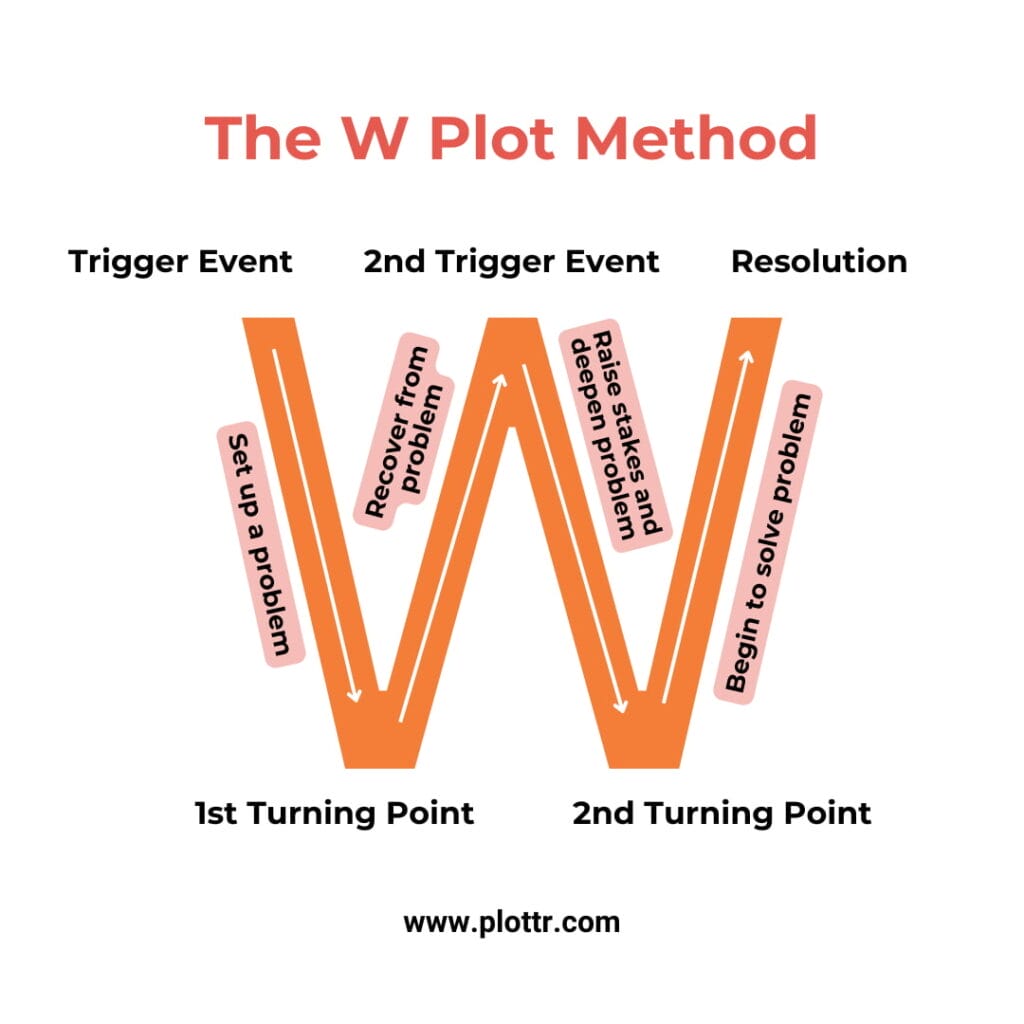
The W Plot Method captures a timeline of rising and falling action. Its peaks and valleys illustrate alternating moments of hope and tension the characters must endure.
This five-point story structure for novelists and screenwriters has some similarities to storyboarding and the classic three-act story structure. In the W Plot Method, however, the second act is split into two parts. This helps authors using the method to focus on rising and falling action.
Some writers use this structure to guide not just their overall plots, but even individual scenes. Why? Because it helps build ebbing and flowing tension in crucial parts of a story.
Learn more about the W Plot Method in this how-to video by mystery author and Plottr Education Lead, Troy Lambert:
Who is the W Plot Method Plot Structure For?
While many fiction authors will find the W Plot Method useful, it’s particularly good for authors whose stories are character-driven.
The W Plot Method places a significant emphasis on the protagonist’s emotional journey and growth.
Authors who excel at creating complex, multidimensional characters and exploring their internal conflicts and transformations can use the W Plot Method to structure their stories around the protagonist’s emotional arc.
If you’re writing literary fiction, an emotionally fraught thriller, or a romance full of titillating tension, this method is for you. The sequential nature of this plot structure makes it an excellent tool for authors of historical fiction, too.
Plot Points of the W Plot Method
The W Plot Method template is one of the shorter plot structures available within Plottr, with only five beats.
Here’s a closer look at each of these beats, with examples from the sci-fi novel The Martian by Andy Weir.
Trigger Event
Begin your story with the setup in the protagonist’s ordinary world, leading to the trigger event. The trigger is an external event that sets the story in motion.
This could be the uncovering of some life-changing information, a job loss, a birth or death, a trip, or an invitation to adventure. It must be a critical event for the story, which introduces a problem that interferes with the character’s goal and increases drama. All this converges to bring the story to its first low point.
Example: In The Martian, astronaut Mark Watney is accidentally left behind on Mars by his crew who believe he is dead. Mark wakes up to find himself alone on the planet with limited supplies and communication. He faces the immediate challenge of survival and must find a way to sustain himself until help can arrive.
First Turning Point
This turning point occurs at the first low point in the story, when it looks like the protagonist may not attain their goal.
The moment takes the story in a new, positive direction, as a change in the situation appears to increase the likelihood of success. The tension eases as the protagonist starts recovering from the first blows of the story’s central problem (for example, by employing the help of allies or new information), and the recovery from the initial problem starts to climb toward the middle of the book.
Example: Mark formulates a plan to extend his survival by rationing his supplies and finding a way to grow food on Mars. He adapts to his new reality and embraces his resourcefulness and scientific knowledge. He sets up a habitat, cultivates plants using Martian soil, and establishes communication with NASA.
Second Trigger Event
The second trigger event is a reversal of fortune. Though a lesser event than the first trigger, it deepens the protagonist’s problem. At this point, you’ll create downward action in the story once more, exploring a new conflict or dilemma. The tension and the stakes increase, leading to the lowest point in the story.
Example: As Mark’s situation becomes known to NASA and the world, the stakes rise. NASA struggles to find a solution in the face of political pressure to launch a rescue. Mark faces numerous obstacles, including a violent Martian storm that damages his habitat and disrupts his food production. He must overcome each challenge to stay alive while also dealing with the emotional toll of his isolation.
Second Turning Point
Here, in the middle of your plot, you’ll reach the lowest point in the story. The protagonist has tried and failed to resolve their problem, and it looks as though all hope is lost as they face their worst-case scenario. They cannot solve the problem on their own.
The protagonist needs help in the form of new hope, ideas, new or returning allies, or a personal change within themselves — but they see no way to grab hold of any of those potential lifelines.
Example: Mark’s progress is hindered when his communication with NASA is cut off, leaving him without the guidance and support of the experts on Earth. He faces a major setback when his makeshift water supply explodes, destroying his crop and endangering his survival.
Resolution
The protagonist begins to resolve their problem with the assistance of some new hope — and the action starts to rise once more as the story heads toward a conclusion.
A moment of epiphany may serve as another minor complication, but ultimately provides the resources needed to lead to a resolution. The solution, once implemented, creates a sense of completion or change for the protagonist.
Example: After enduring multiple setbacks and challenges, Mark’s perseverance pays off. NASA successfully reestablishes communication with him, and a rescue mission is planned. Mark must overcome one final life-or-death situation during his journey to rendezvous with the returning spacecraft. Ultimately, he is rescued and brought back to Earth, where he is celebrated as a symbol of human resilience and ingenuity.
How Do You Use the W Plot Method Template in Plottr?
To begin using the W Plot Method template, first you’ll need to purchase Plottr or sign up for a free trial. Once you have Plottr set up on your computer, follow these steps to begin using the plot template.
- Step 1: Open Plottr. Within the Files tab, click Create From Template
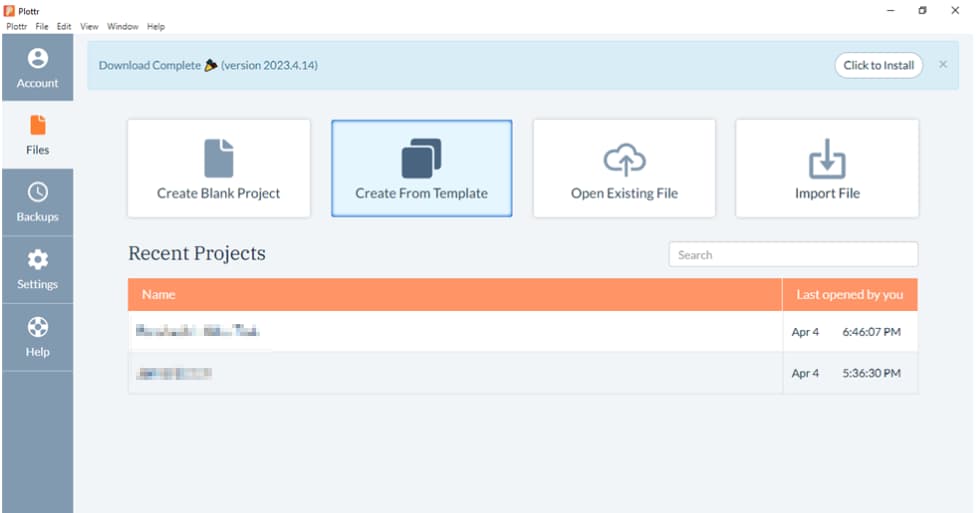
- Step 2: Scroll down to the W Plot template in the menu of available templates, select it, then click Create New Project
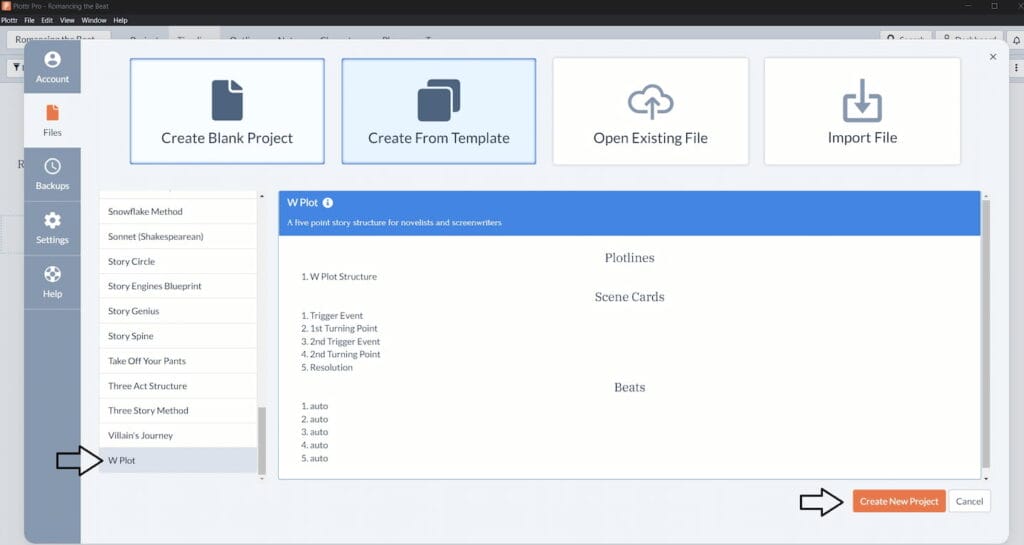
- Step 3: Give your file a name so you can find it easily from your list of recent projects. The template will open in timeline view
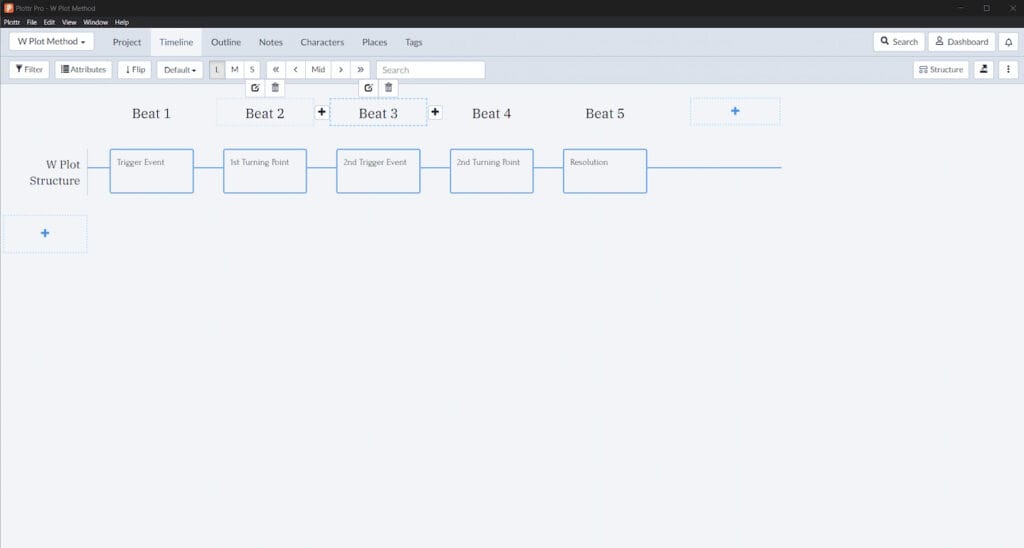
- Step 4: On the timeline view, each of the five boxes is clickable. Select one to open the editor and read the provided details about what should be included at that step. Add your story details above the provided text (you can decide whether to delete the preloaded text, or retain it for reference)
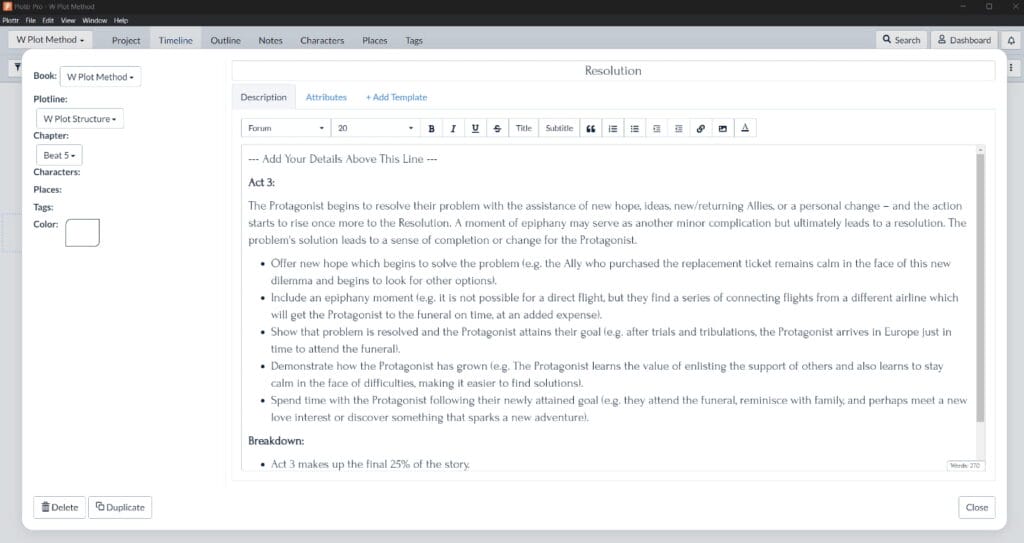
Plot templates in Plottr play well together. Try adding a second plotline to create a subplot, or map out alternate ideas for scenes. These templates work well with the W Plot Method:
Create Riveting Ups and Downs
If the rollercoaster ride of structuring a story using the W Plot Method appeals to you, it’s easy to get started using the W Plot Method Plot Structure Template within Plottr. Start your free trial today to give it a try.
Then, jump into the comments to let us know how you like it — and join our Facebook group to connect with other writers.
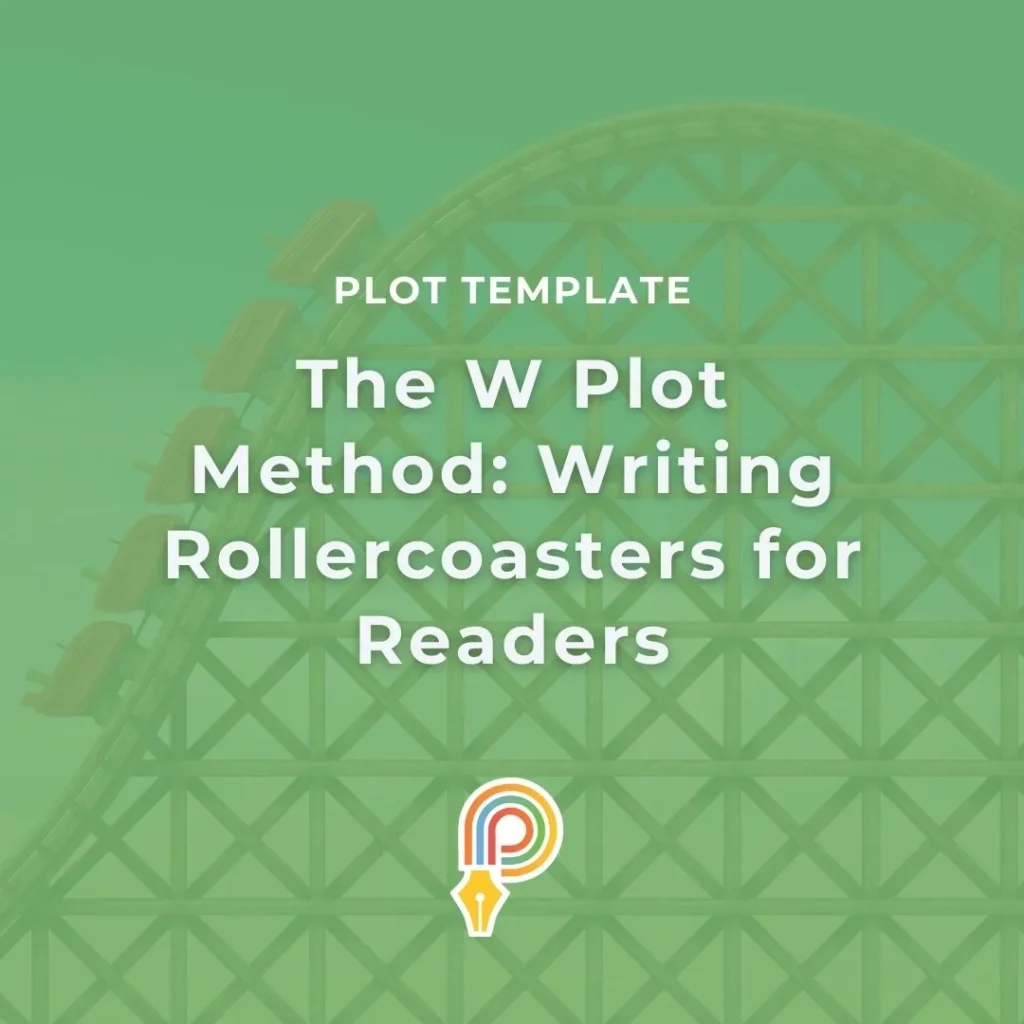



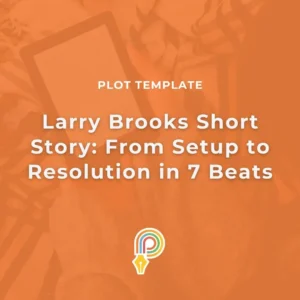
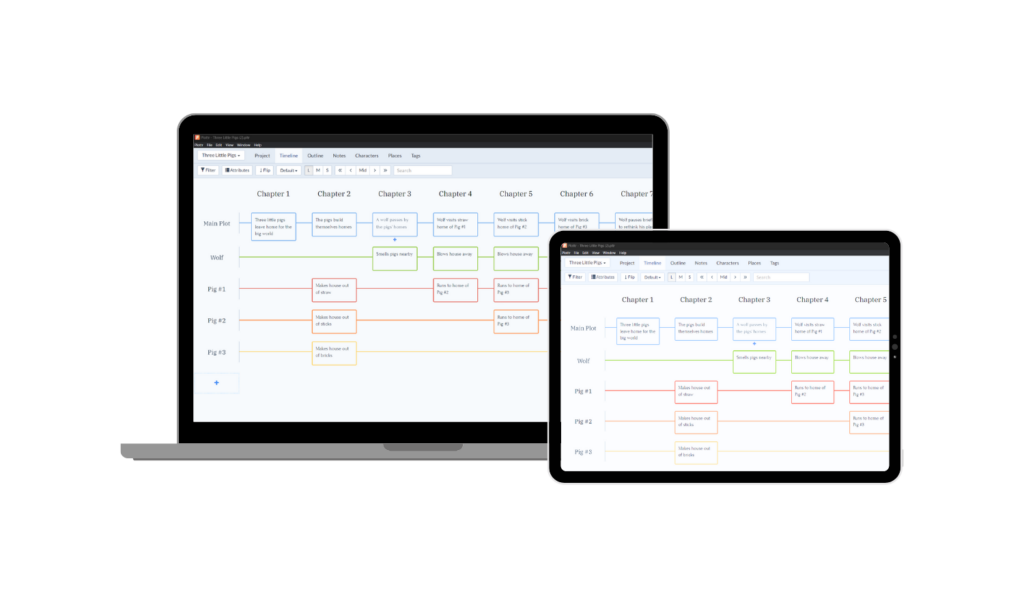
Comments